School and migration: experiences of Venezuelan children in Colombia
DOI:
https://doi.org/10.25057/21452776.1410Keywords:
migration, school, migratory grief, secondary socialization, VenezuelaAbstract
In recent years, Venezuela's social, economic and political transformations have affected the domestic dynamics of the region and have extrapolated beyond the continent, with migration being one of its most important historical and conjunctural effects. The exodus of Venezuelans to Colombia has modified not only the social dynamics of the host country, but also the interactions in educational institutions, following the incursion of migrant children. This research sought to analyze the experience of Venezuelan children in classrooms in the city of Medellin. The horizon of the research is qualitative framed in the case study method that provides dense descriptions with the purpose of interpreting and theorizing about the situation that is the object of study. The semi-structured interview and the situation mural were used to collect information. The findings show the challenges faced by the participants in the new country. In the first place, the xenophobia that they experience from their peers, who replicate the stereotypes of adults, exposing Venezuelan children to bullying. Secondly, the difficulties in adapting to the Colombian curriculum and finally, the types of migratory mourning that must be elaborated, mainly the mourning of family and friends, language, land and culture. The role of the school as a facilitator of the inclusion process of foreign students is discussed.
Author Biographies
Katy Luz Millan Otero, Universidad Católica Luis Amigó
Magister en estudios socioespaciales.
Nicolasa María Duran Palacio, Universidad Católica Luis Amigó
Doctora en filosofía.
Laura Andrea Rodríguez Marin, Universidad Católica Luis Amigó
Estudiante de Psicología.
Andrea García Hincapié, Universidad Católica Luis Amigó
Estudiante de Psicología.
References
Achotegui, J. (2010). Cómo evaluar el estrés y el duelo migratorio. El mundo de la Mente.
Atxotegui, J. (2000). Los duelos de la migración: una aproximación psicopatológica y psicosocial. En E. Perdiguero Gil y J. M. Comelles (Coord.), Medicina y cultura: Estudios entre la Antropología y la Medicina (pp. 83-100). Bellaterra.
Bauman, Z. (2013). Sobre la educación en un mundo líquido. Ediciones Paidós.
Bauman, Z. (2016). Extraños llamando a la puerta. Ediciones Paidós.
Berger, P. L., & Luckmann, T.(1968). La construcción social de la realidad. Amorrortu.
Berry, J. W. (2002). A Psychology of Immigration. Journal of Social Issues, 57(3), 375-387. https://doi.org/10.1111/0022-4537.00231
Blanco, M. (2011). El enfoque del curso de vida: orígenes y desarrollo. Revista Latinoamericana de Población, 5(8), 5-31. https://doi.org/10.31406/relap2011.v5.i1.n8.1
Castillo Crasto, T. y Reguant Álvarez, M. (2017). Percepciones sobre la migración venezolana: causas, España como destino, expectativas de retorno. Migraciones. Revista del Instituto Universitario de Estudios sobre Migraciones, (41), 133-163. https://doi.org/10.14422/mig.i41.y2017.006
Cerón, L., Pérez Alvarado, M. y Poblete, R. (2017). Percepciones Docentes en torno a la Presencia de Niños y Niñas Migrantes en Escuelas de Santiago: Retos y Desafíos para la Inclusión. Revista latinoamericana de educación inclusiva, 11(2), 233-246. http://dx.doi.org/10.4067/S0718-73782017000200015
Chiu, M. L., Feldman, S. S. y Rosenthal, D. A. (1992). The influence of immigration on parental behavior and adolescent distress in Chinese families residing in two western nations. Journal of Research on Adolescence, 2(3), 205-239. https://www.tandfonline.com/doi/abs/10.1207/s15327795jra0203_2
Cole, E. R. (2009). Intersectionality and research in psychology. American Psychologist, 64(3), 170-180. https://doi.org/10.1037/a0014564
Inzunza Gillibrand, K. M. y Videla Contreras, V. (2014). Manifestación del duelo migratorio en niños y niñas inmigrantes peruanos residentes en Santiago de Chile [tesina de grado, Universidad Academia de Humanismo Cristiano]. Repositorio Institucional UAHC.
Jiménez, F., Aguilera Valdivia, M., Valdés Morales, R. y Hernández Yáñez, M. (2017). Migración y escuela: Análisis documental en torno a la incorporación de inmigrantes al sistema educativo chileno. Psicoperspectivas, 16(1), 105-116. https://scielo.conicyt.cl/pdf/psicop/v16n1/art10.pdf
Joiko, S. y Vásquez, A. (2016). Acceso y elección escolar de familias migrantes en Chile: No tuve problemas porque la escuela es abierta, porque acepta muchas nacionalidades. Calidad en la Educación, (45), 132-173. http://dx.doi.org/10.4067/S0718-45652016000200005
Kaluf, M. (2009). Niños inmigrantes peruanos en la escuela chilena. [Tesis de Magister, Universidad de Chile]. http://repositorio.uchile.cl/bitstream/handle/2250/106235/Ninos-inmigrantes-peruanos.pdf?sequence=3
Kelly, U. A. (2011). Theories of intimate partner violence: From blaming the victim to acting against injustice: Intersectionality as an analytic framework. Advances in Nursing Science, 34(3), E29-E51. doi: 10.1097/ANS.0b013e3182272388
López Castro, G. (1999). La educación en la experiencia migratoria de niños migrantes. En G. Mummert (Ed.), Fronteras Fragmentadas (pp. 359-374). El Colegio de Michoacán-cidem.
López Villamil, S., Rodríguez Lizarralde, C., Aristizábal González, L. D. y Barriga Durán, L. C. (2018). Infancias migrantes en Colombia: retos del derecho a la educación. Hojas y Hablas, (16), 10-26. https://doi.org/10.29151/hojasyhablas.n16a1
Martínez Miguélez, M. (2004). Ciencia y arte en la metodología cualitativa. Trillas.
Matus, C. y Rojas, C. (2015). Normalidad y diferencia en nuestras escuelas: a propósito de la Ley de Inclusión Escolar. Docencia, 56, 47-56. https://www.revistadocencia.cl/web/images/ediciones/Docencia_56.pdf
Ministerio de Relaciones Exteriores de Colombia. (2021, 29 de enero). Distribución de venezolanos en Colombia 2020. Migración Colombia. https://cutt.ly/OkLTJeS
Millán Otero, K. L., Duran Palacio, N. M. y Castaño Cano, L. M. (2021). Aproximaciones al Duelo Migratorio de los Venezolanos Residentes en la Ciudad de Medellín, Colombia: Un Estudio Cualitativo. The Qualitative Report, 26(6), 1830-1845. https://doi.org/10.46743/2160-3715/2021.4814
Organización Internacional para las Migraciones. (2006). Glosario sobre migración. Derecho Internacional sobre Migración, N° 7. http://publications.iom.int/system/files/pdf/iml_7_sp.pdf
Ortiz Giraldo, A. (2012). Caracterización Comuna 3 Manrique De La Ciudad De Medellín. Kavilando. https://www.kavilando.org/index.php/2013-10-13-20-05-51/informes/2324-caracterizacion-comuna-3-manrique-de-la-ciudad-de-medellin
Pavez Soto, I. (2012a). Inmigración y racismo: experiencias de la niñez peruana en Santiago de Chile. Si somos americanos. Revista de Estudios Transfronterizos, 12(1), 75-99. http://dx.doi.org/10.4067/S0719-09482012000100004
Pavez Soto, I. (2012b). Migración infantil: rupturas generacionales y de género. Las niñas peruanas en Barcelona y Santiago de Chile. Universitat Autònoma de Barcelona.
Restrepo Pineda, J. E. y Jaramillo Jaramillo, J. (2020). Percepción de líderes sociales y representantes de organizaciones públicas y privadas sobre la migración y los inmigrantes venezolanos en el municipio de Maicao (La Guajira, Colombia). Migraciones. Revista del Instituto Universitario de Estudios sobre Migraciones, (49), 119-145. https://doi.org/10.14422/mig.i49.y2020.005
Rodríguez Pérez, M. A. (2012). El desarraigo y la crisis educativa. Revista Científica de FAREM-Estelí, (2). https://rcientificaesteli.unan.edu.ni/index.php/RCientifica/article/view/468
Sánchez Mimbela, V. (2017). El duelo migratorio en estudiantes de primaria y su culturización. En R. I. Roa Rivera, E. Santillán Anguiano, D. Islas Cervantes y Y. A. López López (Aut.), Migración, Educación y Sociedad: Visiones y experiencias desde la frontera (pp. 129-140). Editorial Redipe.
Stake, R. E. (1999). Investigación con estudio de casos. Ediciones Morata.
Suárez-Orozco, C. y Suárez-Orozco, M. M. (2003). La infancia de la inmigración. Ediciones Morata.
Taylor, S. y Bogdan, R. C. (1989). Introducción a los métodos cualitativos de investigación. Paidós.
Vargas Valle, E. D. y Camacho Rojas, E. (2015). ¿Cambiarse de escuela? Inasistencia y rezago escolar de los niños de migración reciente de Estados Unidos a México. Norteamérica, Revista Académica del cisan-unam, 10(2), 157-186. https://doi.org/10.20999/nam.2015.b006
Vera Noriega, J. Á. (2009). Depresión, ansiedad y estrés en niños y niñas jornaleros agrícolas migrantes. Psico, Porto Alegre, PUCRS, 40(3), 337-345. https://n9.cl/loy1
Zapata Martínez. A. (2021). El hogar en contextos transnacionales: una reflexión desde la migración de madres/padres colombianos a Santiago de Chile. Antípoda. Revista de Antropología y Arqueología, (3), 75-96. https://doi.org/10.7440/antipoda43.2021.04
Zimmerman C., Kiss L. y Hossain M. (2011). Migration and health: A framework for 21st century policy-making. PLoS Medicine. 8(5), 1001-1034. https://doi.org/10.1371/journal.pmed.1001034
How to Cite
Downloads
Support agencies:
Universidad Católica Luis AmigóPublished
Issue
Section
License
Copyright (c) 2021 Institución Universitaria de Envigado

This work is licensed under a Creative Commons Attribution-NonCommercial-ShareAlike 4.0 International License.

| Article metrics | |
|---|---|
| Abstract views | |
| Galley vies | |
| PDF Views | |
| HTML views | |
| Other views | |




